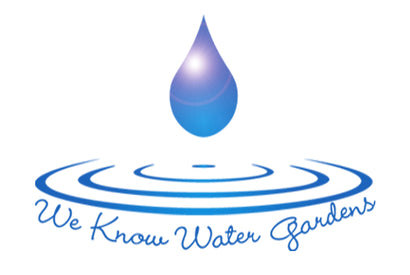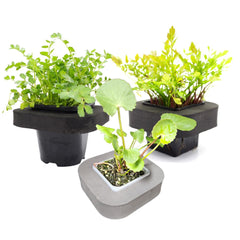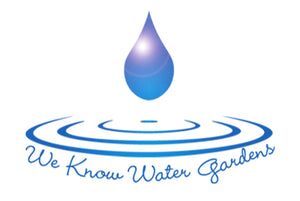
If you're looking for a unique way to grow your own food and add some beauty to your backyard, consider creating an edible water garden.
This guide will walk you through the steps to create a stunning water feature that also produces fresh edibles to compliment any vegetable garden.
With a little planning and effort, and even a water feature, you can enjoy the benefits of a culinary water garden!
Choose the right location and size for your water garden.
Before you start digging, it's important to choose the right location and size for your edible water garden. Look for a spot in your yard that gets at least six hours of sunlight per day and has access to a water source. Consider the size of your garden based on the amount of space you have available and the types of plants you want to grow. Keep in mind that larger gardens will require more maintenance and may be more difficult to manage.
Select the right plants for your water garden.
When selecting pond plants for your edible water garden, it's important to choose varieties that can thrive in a water environment. Some popular options include Lebanese cress, water mint, water parsley, and water spinach. You can also consider adding floating plants like water hyacinth or water lettuce to help filter the water and provide shade for your fish. Be sure to research the specific needs of each plant and choose varieties that are appropriate for your climate and growing conditions.
A great place to start if you are undecided is to look at our Pond Plant Starter
Packs,this range features 2 edible starter packs.
There is also an edible pond plant starter kit that we have created that features our top 3 most popular edible pond plants in Australia! This pack includes, Gotu kola, Lebanese cress and water parsley.
Our Top 5 Edible Pond Plants
Creating an edible water garden is a fun and sustainable way to grow your own food. It is as easy as setting up your edible water garden in a container that holds water or in a larger pond. Our floating rings make edible plants easy to grow in larger ponds of any depth. Although choosing just 5 edible plants was difficult for us here at the nursery, here are our top 5 edibles to get started on your edible journey!
1. Lebanese Cress (Aethionema Cordifolium)
One great option is to grow Lebanese cress, a nutritious water plant that can thrive at the edge of a pond or in a pot submerged in the water to a depth of 10cm. Not only is it easy to grow, but it also adds a unique flavor to salads and sandwiches.
To get started, simply place your Lebanese cress in a sealed container and submerge it in water. If you are growing this in a larger pond make sure to keep it in the floating ring and provide plenty of sunlight. With a little care and attention, you'll have a thriving edible water garden in no time!
2. Fine leaf water mint

A popular edible plant that can be contained by growing on ponds! This variety grows to 30cm in height and can be grown in part shade. Fine leaf water mint has many health benefits. It can be effective in relieving digestive problems such as upset stomach, bad breath (can be used as a mouthwash) and indigestion.
Like all mints, fine leaf water mint is a good source of vitamin C when served fresh. It also contains vitamin A.
3. Water garlic
Water Garlic is a fairly recent addition to the world of pond plants. A native of South Africa, Water Garlic can reach 30cm in size and has light green to grey strappy foliage and produces a small purple flower. It enjoys a full sun position and will perform best when grown in shallow water that does not cover the crown of the plant and can be grown in the floating pond ring that is included with all of our plants.
Water Garlic can be propagated through division with clumps divided on a yearly basis to encourage vigorous growth and flowering through the summer months.
The leaves of Water Garlic can be chopped and used in salads and soups. The flowers can be added to vinegar or oils to give a slight hint of garlic flavour. You could also choose to use the flowers as an edible as a garnish.
4. Vietnamese Water Mint (Polygonium odoratum)
Vietnamese Water Mint also known as Vietnamese coriander is one of the most useful and easy to grow water plants. It is an exceptionally fast grower, and its leaves can be used in drinks, salads and curries. Aside from their edible qualities, the leaves have an almost dark variegated pattern on them, and they are very attractive. Although not a true member of the mint family of plants it carries many of the same traits in how it grows, reproduces, and tastes.
It can grow up to 30cm in size, but when used on a floating ring on the pond, Vietnamese Water mint tends to spread out rather then grow up right. It can be propagated from cuttings with the stems of the plant dropping roots in the water as it spills into the pond. A fast grower, Vietnamese Water Mint needs monthly feeding using a pond fertiliser tablet from October through to March. As well as the leaves being edible, when grown in the floating ring that comes with all of our plants it spreads out and provides shelter for fish and tadpoles.
5. Water parsley (Oenanthe sarmentosa)
Much easier to grow than traditional varieties of parsley, our water parsley is always flourishing. It will tolerate a full sun to part shade position but does best when it receives full sun. This variety will grow 40cm W and 20cm high.
Water parsley is rich in vitamins A, C & K. It's rich in antioxidants, flavonoids & carotenoids. Used in salads & as a garnish, don't leave this super food on the side of your plate!
Incorporate fish and other aquatic life into your water garden.
Adding fish and other aquatic life to your edible water garden can not only provide a source of food, but also help to maintain a healthy ecosystem. Consider adding goldfish species such as the hardy comet, which are well known for their ability to thrive in a water garden environment.
The waste produced by your fish will be taken up as nutrient by your edible plants, a classic example of aquaponics in action!
Be sure to research the specific needs of each species and provide appropriate filtration and aeration to keep the water clean and oxygenated. Additionally, consider adding beneficial bacteria to help break down waste and maintain a healthy balance in the water.
Maintain proper water quality and circulation.
Proper water quality and circulation are essential for the success of your edible water garden. Make sure to test the water regularly and adjust the pH and nutrient levels as needed. You can also add aquatic plants like Brahmi Bacopa Monnieri
which can help to naturally filter the water when submerged in your pond.
Consider adding a fountain or waterfall to increase circulation and oxygenation in the water. This will not only benefit any aquatic life, but also help to prevent the growth of algae and other unwanted organisms.
Harvest and enjoy your edible water garden bounty.
Once your edible water garden is established and thriving, it’s time to start harvesting and enjoying the fruits of your labor. Depending on what you’ve planted, you may be able to harvest fresh herbs, fruits, and vegetables right from your water garden. Some other popular options include Lebanese cress, fine leaf water mint, and water celery. Be sure to harvest regularly to encourage continued growth and prevent overcrowding. And don’t forget to share your bounty with friends and family!
harvesting and enjoying the fruits of your labor. Depending on what you’ve planted, you may be able to harvest fresh herbs, fruits, and vegetables right from your water garden. Some other popular options include Lebanese cress, fine leaf water mint, and water celery. Be sure to harvest regularly to encourage continued growth and prevent overcrowding. And don’t forget to share your bounty with friends and family!
© weknowwatergardens 2024










